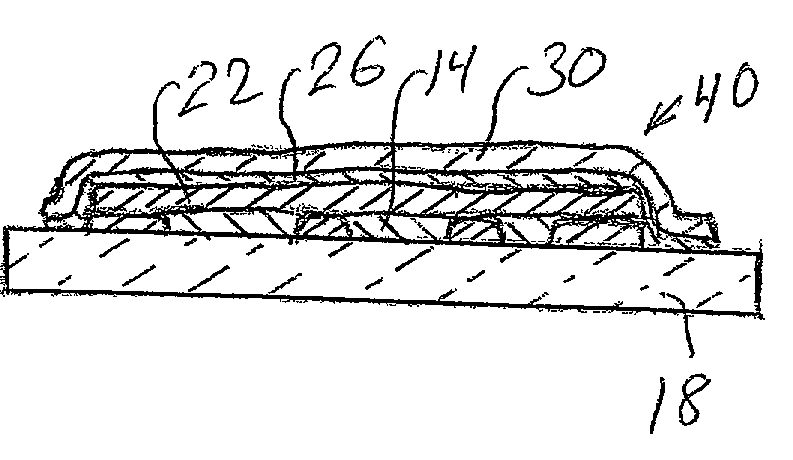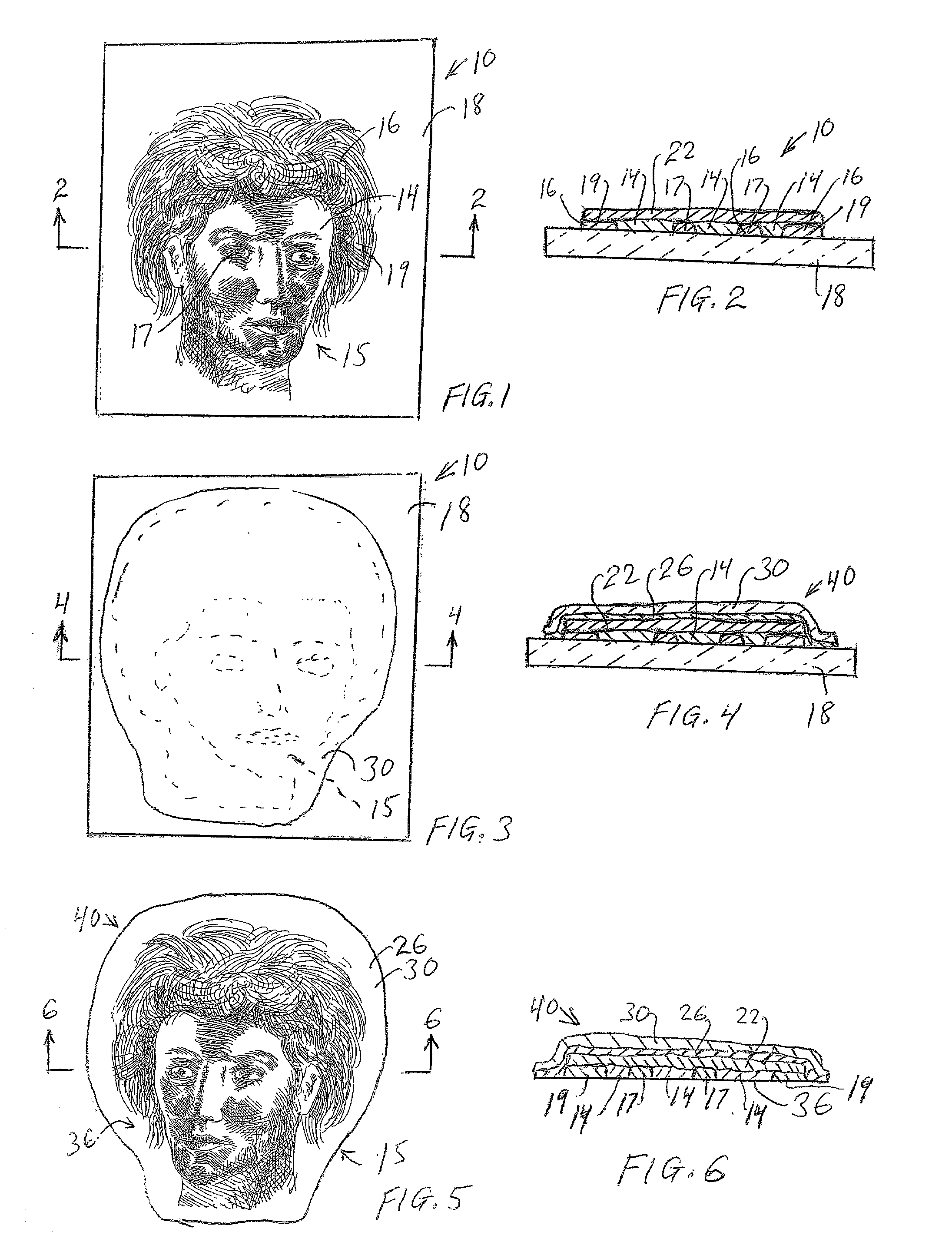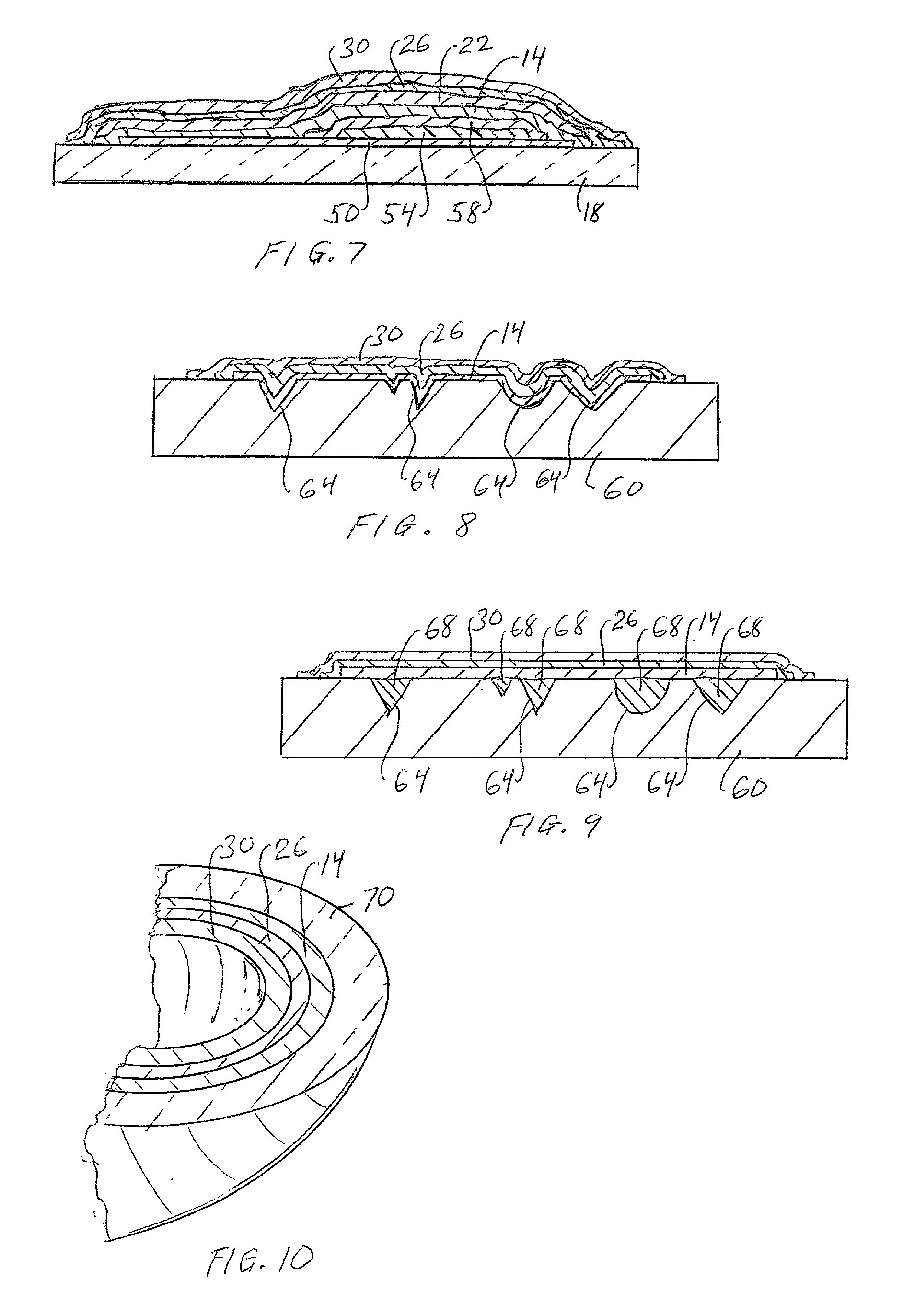Acrylic paint monotype artwork
- Summary
- Abstract
- Description
- Claims
- Application Information
AI Technical Summary
Benefits of technology
Problems solved by technology
Method used
Image
Examples
example 10
[0060] Example 10--In still another procedure an image may be created such as a variety of textures on one matrix surface, the sole purpose of which is to be available for repositioning sections on other matrix surfaces. The result is then treated as depicted in FIGS. 3-6 and described above.
[0061] This invention further allows the making of monoprints through the method of cutting, engraving and impressing lines and textures into plate surfaces using blades, wood and lineoleum cutting tools as well as the use of selected objects for the purpose of creating textures through the use of pressure. Low density polyethelene plates are most useful for these purposes. As depicted in FIG. 8, the surface of the plate 60 has been cut to create grooves 64. The cut, engraved or impressed areas on the plate are then be filled with acrylic pigment 14 in the process of painting on its surface. After drying, gel 26 is applied and cloth or paper backing 30 is pressed into the gel and allowed to dry....
PUM
| Property | Measurement | Unit |
|---|---|---|
| Adhesion strength | aaaaa | aaaaa |
Abstract
Description
Claims
Application Information
 Login to View More
Login to View More - R&D
- Intellectual Property
- Life Sciences
- Materials
- Tech Scout
- Unparalleled Data Quality
- Higher Quality Content
- 60% Fewer Hallucinations
Browse by: Latest US Patents, China's latest patents, Technical Efficacy Thesaurus, Application Domain, Technology Topic, Popular Technical Reports.
© 2025 PatSnap. All rights reserved.Legal|Privacy policy|Modern Slavery Act Transparency Statement|Sitemap|About US| Contact US: help@patsnap.com



